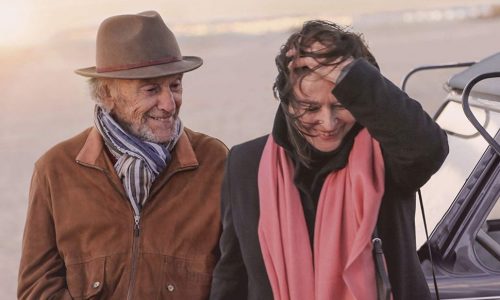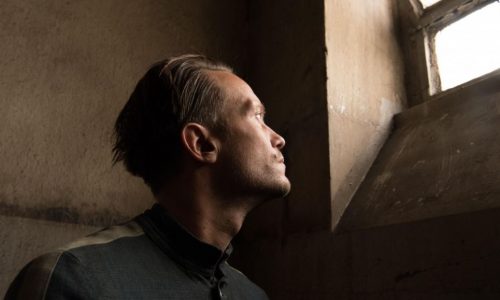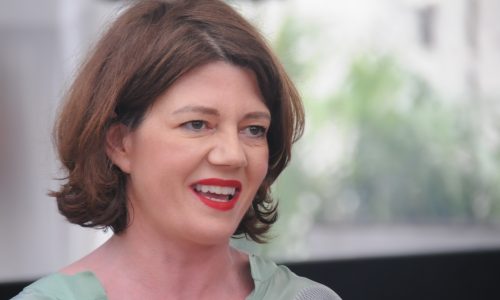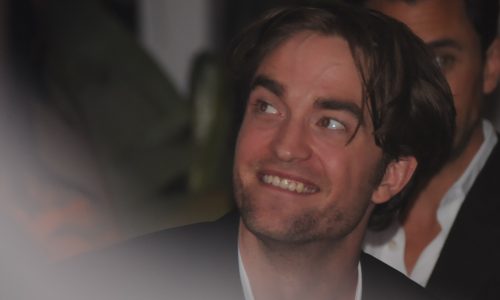Somehow, despite there being more opportunities to see films for the press than ever, it’s not proving to make things any easier, particularly in the strands running alongside the official Cannes festival selections. There was an 8.45am start for a film starring Robert Pattinson and Willem Dafoe called The Lighthouse in the Director’s Fortnight programme, which could have potentially given me an all-important extra 15 minutes in bed, compared with an official festival film – although with a ten minute longer walk to get there, that would be reduced to 5 minutes. I hope that 5 minutes was worth it, because the cinema was full even before I arrived and the later start meant there was no back-up option. At least it meant I didn’t have to stand and wait in the ongoing drizzle on the off-chance of a seat.

After catching up on some work in the Press Room, I made sure I was in good time for the next film – Claude Lelouch’s The Best Years of a Life, playing out of competition. It was an intimate drama about reconnecting with the past as a young-at-heart elderly woman is persuaded to visit her ex-husband in the home where he’s been living since his dementia became too severe for his family to cope with themselves – she’s his best memory, his son – from one of his many affairs – tells her. The story doesn’t particular require this couple to be known to the audience, but reprising their roles from Lelouch’s Palme d’Or-winning 1966 romance A Man and a Woman, Anouk Aimée and Jean-Louis Trintignant are steeped in their own history and fellow octogenarian Lelouch is able to use more than fifty year old footage for flash-backs and memories of the pair in their younger days. With an added element of fantasy, as Trintignant’s former racing driver is given a new lease of life by the re-emergence of his one true love after many decades, this is a surprisingly light-footed, if sentimental journey, providing audiences with the most upbeat picture of dementia and ageing of any film I can recall – it’s almost an emotional anti-dote to Michael Haneke’s Amour. It’s bitterly sad but it’ll leave you beaming with a warm smile. This heartfelt drama, that leaves you feeling much better about getting older, raises the ongoing question of why some of the more satisfying films playing here are not selected for the competition.

Next up was another Cannes veteran as Terrence Malick’s latest magnum opus was unveiled to the press for the first time. As I was waiting in the blue-press line, I was torn between the frustration of the possibility of queuing for ages only to miss out again or actually getting in and having to endure nearly three hours of pretension – but with the possibility of some genius lurking in there somewhere – and that’s what we got. An unusual subject for this American master, we’re told that in Second World War Austria, refusing to swear loyalty to Hitler could result in execution, before being introduced to August Diehl’s Franz, a farmer – who refuses to swear loyalty to Hitler. The film looks stunning much of the time – mostly when the Austrian mountains form the backdrop of this bleak drama, but the wide-angle shots, often from close to the ground, can feel quite disorientating at times – which might be part of the effect he’s trying to convey. There’s something moving about an actor best known for playing Hitler in Downfall, Bruno Ganz, making one of his final appearances as a Nazi judge who displays more sympathy than one might expect for the subject matter. There was a powerful, effective and beautiful one-and-a-half-hour drama buried inside this three-hour long behemoth, that’s far too long and far too slow and often undermines its own logic by appealing to its main character’s religious beliefs. Worst, for me, was the use of German and Austrian actors speaking in English – either give us a subtitled German-language film or use English or American actors and allow the audience to infer the provenance of the characters – there’s very rarely a need to have characters speaking to each other in English but with a foreign accent and there certainly isn’t here – the accent doesn’t make the self-indulgent drama any more authentic or the protagonist’s actions any more honourable or understandable.
Now, Cannes is no stranger to protests. Last year, famously, more than eighty women staged a demonstration on the red carpet against a lack of diversity at the festival, although that one was, it seems, sanctioned by the organisers anyway. But outside the Palais today was a somewhat unusual demonstration, as a handful of people waved placards and chanted, calling for – sunshine.
There was time for just a quick pass through the market before heading back to change into a suit for what was always going to be a busy night; I came out to Cannes with two receptions pencilled in, with a third arriving soon after I arrived and a fourth invite arriving this afternoon.
The evening began with a drinks reception courtesy of the Israel Film Fund, interestingly sharing the same space as the Arab Cinema Center from yesterday. The event seemed oddly subdued, with no promotional boards or posters or any indication of who was even hosting it. Among the Israeli film-makers, I bumped into Montserrat Roig de Puig, a London-based Spanish actress who was not using this year’s Cannes to sell her most recent work – described as a Polish Tarantino film – but for the all-important networking.

I didn’t have too long there before having to move on to the Creative Scotland party – a little better branded, with bagpipers welcoming guests at the door and tartan decorations, from table-cloths to strips around the flower-pots. This is always one of the main gatherings in Cannes for British film-makers – Ken Loach’s writer Paul Laverty and producer Rebecca O’Brien were among the guests. The last time I spoke to the organisation’s Executive Director for film, Isabel Davis, she was at the BFI. Welcoming guests, she joked that the first thing she’d done in her new role was to move the Scotland party from its traditional Tuesday night to Sunday; this had the benefit of reaching a wider audience and so making a bigger impact, as by Tuesday, some in the market have already headed home, but this also resulted in a somewhat peculiar schedule clash, with a large BFI contingent having to leave the party halfway through to get to their own reception, a fifteen minute walk back down the beach. Davis kept the formalities brief, but she used the brief time she allowed herself to make her views clear on one thing; she emphasised that Creative Scotland was “proudly European” and said it was “committed to remaining part of Europe, whatever happens.”
A short while later, I followed the BFI team back up the beach for the London Film Festival reception, whose guests included representatives from other festivals around the world and many of the staff who travel the world watching films to help the LFF director Tricia Tuttle put her annual programme together, including Cary Rajinder Sawhney, who advises her on films from south Asia, as well as running his own London Indian Film Festival.

The late addition to my diary was an invite to the Hollywood Foreign Press Association’s annual Cannes party, which – as its name might suggest – was much more of a Hollywood affair. But while the Scotland and BFI events were essential free-for-all mixers, with plentiful finger-food being brought around on trays or waiting on tables, food at the HFPA party was scarce – the waiting staff whisked it from the kitchen at head-height, straight to the VIP areas where the likes of Robert Pattinson and Dame Helen Mirren were waiting to carry out the formal duties of the night; on behalf of the HFPA, they handed a cheque for half a million pounds to the Help Refugees charity – one of many philanthropic gestures made by the group behind the Golden Globes. But in a way that only Hollywood could, straight off the back of a video about the plight of refugees, a group of dancers from the Port Authority film put on a display of their ballroom vogue, followed by a saxophonist providing funky dance music from on top of the bar. Milling around were also a handful of representatives from other films, including the irreverent comedy buddy-movie The Climb. In true Hollywood party style, this one even had a going-home present – a bag of presumably high-end ladies’ cosmetics, but I won’t know how impressed to be with that until I get it home.
After a night like that, the socialising element of Cannes looks likely to slow down, as people start to return home and invites start to dry up, so it looks like there’ll be more nights ahead watching films. I guess it is the Cannes Film Festival and not the Cannes Party Festival.
